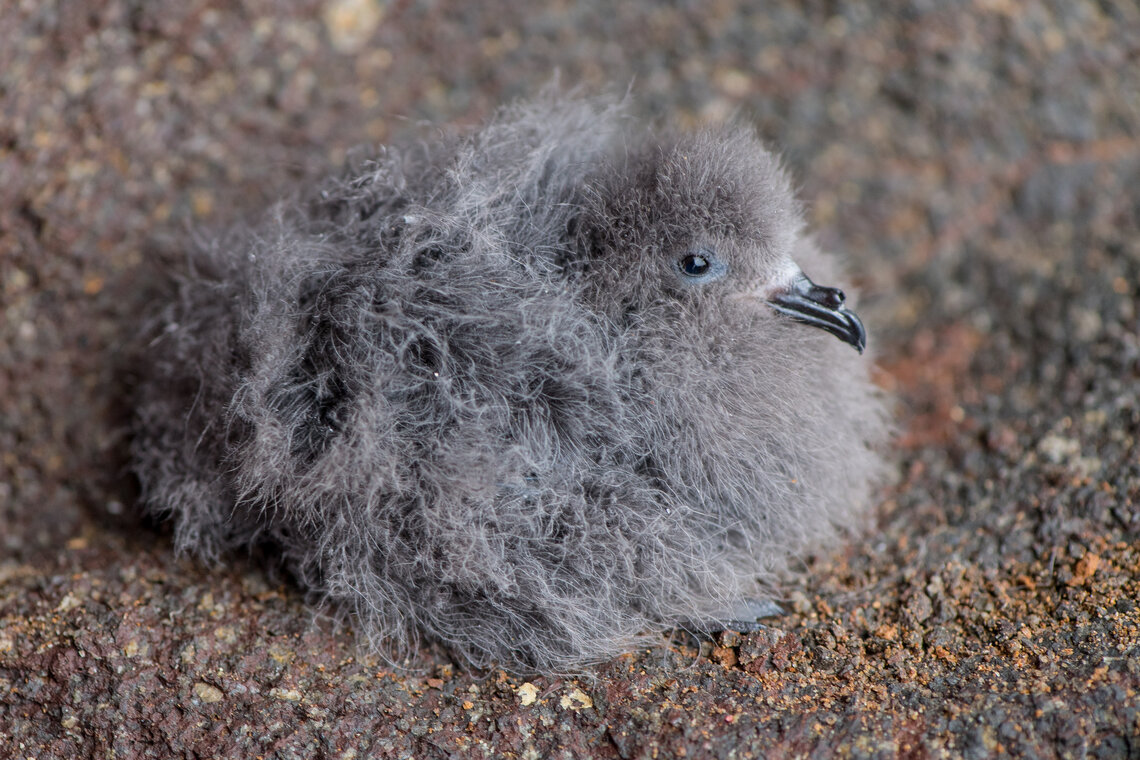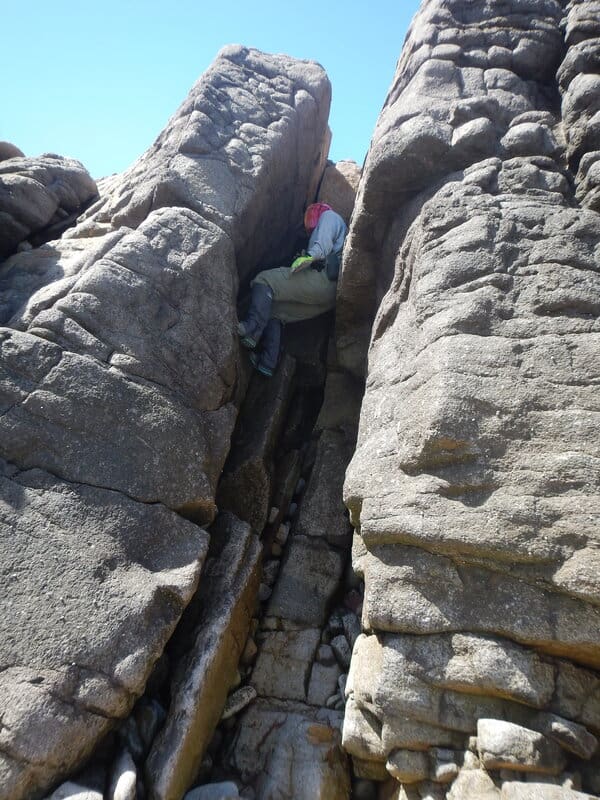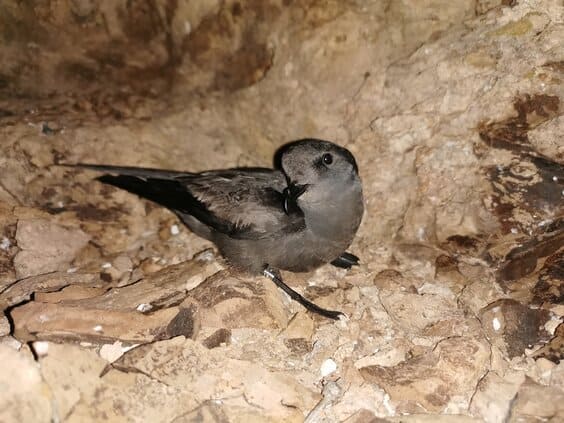
Ashy Storm-Petrel chick found during nest searches in the Todos Santos archipelago (photo by GECI/J.A. Soriano).
By Alejandra Fabila Blanco, Alicia Aztorga Ornelas, María Félix Lizárraga and Yuliana Bedolla Guzmá, Grupo de Ecología y Conservación de Islas, A.C.
The Ashy Storm-Petrel (Hydrobates homochroa) is an endemic seabird to the California Current with a very restricted distribution that ranges from northern California to the southern Pacific of Baja California. Unlike other petrels, it is not a migratory bird, and frequents its nesting sites throughout the year. During its breeding season, which runs from February to November, it visits its colonies at night and breeds on islands among rocky cavities. The Todos Santos archipelago, off the coast of Ensenada, Baja California, is its southernmost breeding site and hosts the most important colony in Mexico. These islands, Todos Santos Norte and Todos Santos Sur, are protected as part of the Baja California Pacific Islands Biosphere Reserve and are in a good state of conservation, thanks to the removal of exotic mammals -cats, rabbits, donkeys- more than 20 years ago.
At Grupo de Ecología y Conservación de Islas our mission is integrated conservation and sustainable development of Mexican islands. The Ashy Storm-Petrel is a priority species for us since it is in danger of extinction and is protected by Mexican law. Therefore, since 2015, when we confirmed that the species was nesting in the Todos Santos archipelago, we have been monitoring it and carrying out conservation actions. In 2019 we formed the Ashy Storm-Petrel Working Group comprised of 14 organizations from Mexico and the United States that work with the species throughout its distribution. In 2020 we developed a standardized monitoring plan and in the last two years we have implemented it in a coordinated manner to evaluate the population trend of the species.

Team conducting a nest search for Ashy Storm-Petrel among rocky habitat in Todos Santos Island (photo by Alicia Aztorga).
Monitoring consists of an exhaustive nest search in all potential habitat accessible on the islands, monitoring throughout the breeding season to estimate reproductive success, and the capture and banding of adult individuals to establish a population trend index and evaluate survival. With lamp and borescope in hand, we check every gap between the rocks to find any adult, egg, chick, or any trace of them. We also play vocalizations in expectation of a response and can thus confirm occupancy. To date, we have recorded 84 nests, mostly in a small area northwest of Todos Santos Norte Island. Over the past two years, the species has had relatively high reproductive success; 70% of pairs raised their only chick to fledging stage. With the help of mist nets, which we set during the night of the new moon, we have captured about 500 individuals.
Although the Todos Santos archipelago is currently a safe nesting site for eight species of seabirds, including the Ashy Storm-Petrel, there is a constant risk of accidental introduction or reintroduction of invasive mammals, which could seriously harm the populations of these species. For this reason, in close collaboration with CONANP and the participation of visitors of the Todos Santos archipelago, we developed an island biosecurity protocol as an instrument of good practice and implemented measures to prevent the introduction of potentially harmful species. We have also carried out a communications campaign to share information about the Ashy Storm-Petrel and its conservation needs among the public and to promote actions we can all take to protect this bird and its habitat.

Adult Ashy Storm-Petrel individual captured and banded during a night survey (photo by GECI/Alejandra Fabila).
So far, great advances have been made in the knowledge base about Ashy Storm-Petrel in Mexico, although there are still many information gaps for this species. Among them include a need to assess its status in other colonies, its trophic ecology and distribution at sea, as well as the evaluation of threats at sea such as pollutants and artificial light sources. This information, as well as the collaboration between different national and international organizations, is important for decision making and to continue conservation actions in support of this priority species.


 English
English  Español
Español 